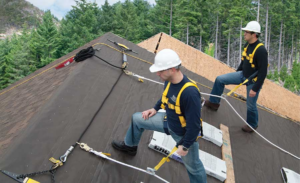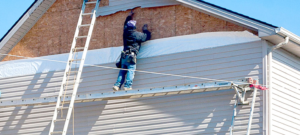Real Estate is important to our economy and can be a profitable investment. Some investors purchase single-family homes, condominiums, and apartment buildings and rent them out. Others flip properties, reselling them quickly and often for more money.

Real estate is land and any natural or artificial–man-made–improvements that are permanently attached to it. These improvements increase the value of the property. Real estate also offers a good opportunity to diversify an investment portfolio.
Land is a valuable asset that can be used for residential and commercial purposes. Its value is based on the location, climate, soil conditions, water resources, and other natural features. It is also the basis for property tax. In addition, land can be used as collateral for loans.
Residential real estate includes single-family homes, condominiums, and multifamily rental units. It also includes commercial and agricultural buildings, as well as vacant and undeveloped land. It can be purchased outright or through a lease agreement. Its value depends on the location and the type of housing, which will influence the property’s marketability and potential. For example, flat and easily accessible land is usually more valuable than hilly or rocky terrain. Other factors that affect land value include the topography, zoning regulations, and infrastructure.
Commercial real estate includes warehouses, shops, and other commercial facilities. Its value is based on the availability of transportation and other infrastructure, as well as the availability of workers. It can be bought outright or through a lease agreement, and it can be used as collateral for loans. In addition, it is subject to recurring expenses such as taxes and maintenance.
Investing in land can be lucrative. It can provide a stable income and long-term wealth accumulation. However, it is important to understand your own investment goals before investing in land. It is also crucial to keep up with local real estate and public policy trends that could impact land values. For example, if the local government is planning to build new roads or other public infrastructure, it may increase the value of your property. Similarly, changes in weather or natural disasters could have an effect on your land’s value.
Buildings
Buildings are permanent human constructions that raise the value of land. They can be used for commercial, industrial or residential purposes and are typically owned by investors. They may be purchased and resold, or rented. These structures include houses, office buildings, apartment complexes and strip malls. They also include any additions made to the land, such as sewers and water systems.
The most common type of real estate is residential property, which consists of new and resale homes. It includes single-family houses, condominiums, co-ops, townhouses, duplexes, triple-deckers and quadplexes. It also includes multi-generational homes and vacation homes. The other category is commercial property, which consists of shopping centers and strip malls, medical and educational buildings, hotels and offices. Apartment buildings are sometimes considered commercial, even though they are used for homes, because they are occupied to make income.
Vacant land is also part of real estate and is a subcategory of commercial real estate. It includes sites that are undeveloped, early development or reuse, site assembly and subdivision.
Leases
Real estate is any property that contains land and buildings. This can include structures like homes, offices, and apartments. It can also be used for commercial purposes, such as manufacturing and warehousing. The value of real estate can be determined by the amount of money invested in it and the income it generates. For example, rising home starts and closings can indicate a healthy real estate market.
The type of real estate that people buy varies according to their needs and desires. Some of the most popular types of real estate include residential, commercial, and industrial. Residential real estate includes everything from single-family homes to condominiums and apartments. It can even include portable dwellings like houseboats. Most of these properties are bought for the purpose of occupation, and they may be leased or owned.
Many real estate investors choose to lease their properties instead of selling them. This is because it can be a more cost-effective way to get the most out of your investment. However, there are a few things you should consider before signing a lease contract. First, make sure you understand the residual value of your property. This is the difference between your total payments and the fair market value of your property at the end of the lease term.
The new lease standard requires most leases to be recorded on the balance sheet. This process is complicated and involves substantial analysis and consideration. In addition, the definition of a lease is unclear. This can lead to disputes over whether or not a particular contract is a lease under the new standard. To avoid these disputes, it’s important to carefully evaluate the terms of a lease contract.
Mortgages
Mortgages allow individuals to purchase real estate without paying the entire amount upfront. The borrower will repay the loan plus interest over a period of years until he or she owns the property free and clear. Mortgages are also known as liens against property or claims on property. If the borrower fails to make payments, the mortgagee can foreclose on the property.
Mortgage loans are used to finance residential and commercial real estate. They can be used to buy houses, townhouses, condominiums, co-ops, lots and acreage, modular homes and other types of real estate. These loans are considered secured because they require a pledge of the real estate as collateral in case the borrower fails to meet his or her obligations under the contract.
In the case of a primary residence, the down payment is typically expressed as a percentage of the home’s purchase price. Secondary residences may require a higher down payment than a primary residence, depending on the lender and its risk assessment procedures. Investment properties are those that are purchased with the intention of earning a return through rental income or future resale. These properties may require a larger down payment than secondary and primary residences because lenders consider them to be more at risk of default during financial hardship.
Scams
Real estate scams can be costly, especially for new investors. Investors should always conduct thorough due diligence, including a background check on everyone involved in any transaction. They should also avoid communicating personal financial information over email and only sign documents in person. One of the most common real estate scams involves fraudulent invoices. These may be sent to a company’s accounting team and appear to be legitimate, but they are actually fake. It is important to have proper procedures in place to prevent these frauds and keep your accounting team on guard.
Other real estate-related scams include fraudulent requests for wire transfers and property condition fraud. For example, contractors may approach property owners and offer to improve their home’s value for a fee. The scammer then collects the money and disappears without completing the work. This type of scam is often targeted at homeowners in financial trouble, so it is important to always research anyone who approaches you about a property or service.
Another common real estate scam involves fraudulent deeds and title transfers. Title pirates use forged deeds or other documents to steal titles from people who buy vacant land or property. These scams are gaining momentum, and losses from them have increased significantly. Real estate professionals should be aware of these scams and make sure to check the title on vacant property before closing a sale.
Scams associated with real estate are on the rise, and many of them target inexperienced investors. For example, scammers often target rental properties and sell them to unwary buyers who are looking for a quick profit. Investors should also be wary of workshops and seminars that promise to help them become rich fast through investing in real estate.








